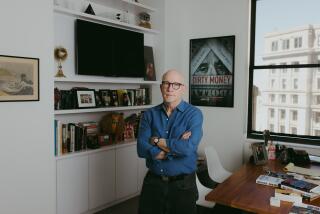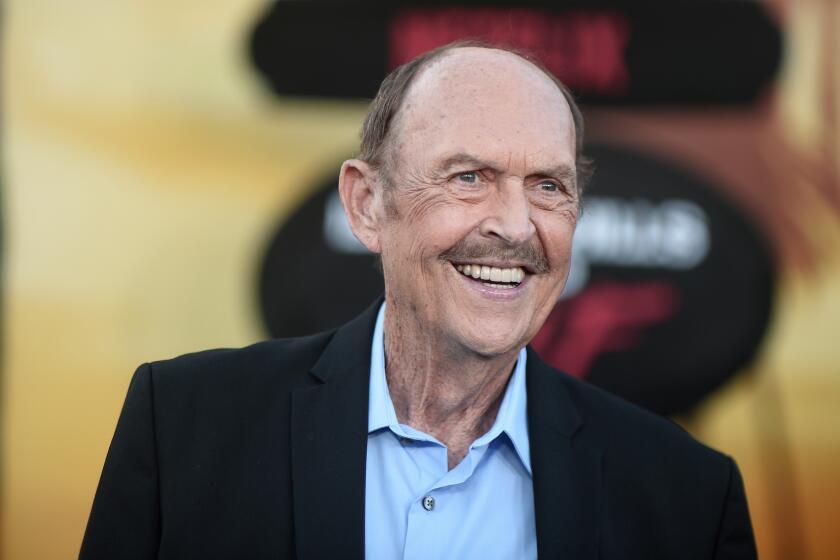Getty to Show Little-Known Films for Paul Strand Centennial
Paul Strand’s photographs are so quiet and strong that they seem rooted to the earth.
This American photographer--whose pictures are on display at the J. Paul Getty Museum in honor of his centennial year--is celebrated for his strong sense of composition and for capturing images that convey a brooding emotionalism in their stillness.
But Strand also made pictures move. Although far better known for his photographs, he was also involved with several movie projects.
A handful of these rarely shown films are being screened at the Getty in connection with the current exhibition.
“The individual shots in the films are composed very much like his still photographs,” said Judith Keller, curator of the Strand exhibit. “There is very little action, but they are very, very beautiful to watch.”
Strand, who was born in New York City in 1890 and died in France in 1976, didn’t just dabble in filmmaking as an artistic sideline. He made his living from it during one period in his life. In 1922, after making a short experimental film the previous year with painter Charles Sheeler, Strand began filming news and sports events, selling the footage to newsreel companies.
“Some newsreel studio ended up with film of the Kentucky Derby and football games at Harvard by one of the world’s greatest photographers,” Keller said.
In the early 1930s Strand’s life and work shifted focus. He began taking trips to Taos, N.M., where he got to know a group of left-leaning, politically active artists, poets, playwrights and filmmakers. “He decided that as an artist, he, too, should take sides,” Keller said. “He wanted to make a difference, take a stand.”
In 1932, he traveled to Mexico, where he took a landmark series of photographs of people and religious icons. He also co-wrote, photographed and supervised “The Wave,” an hourlong movie about a group of Mexican fisherman in Vera Cruz who organize to fight mistreatment by the boss of the fishing operation.
“As a narrative film, it is not all that much of a success,” said Michael Renov, the head of the critical studies division at the USC School of Cinema-Television. “But the photographic quality of the work is extremely striking. He used a lot of low- angle, heroic framing of people against natural backgrounds, in the manner of Eisenstein.”
“The Wave,” which was directed by Fred Zinnemann, opened in New York in 1936 to mixed reviews, but Strand’s cinematography received high marks. Strand joined a co-op of other filmmakers in New York and embarked on the most ambitious film project of his career, “Native Land,” a complex 1 1/2-hour film about the labor movement in this country.
It had a script by Ben Maddow (who now lives in Los Angeles and is best known for his writings about photographers), music by Marc Blitzstein and narration by the famed singer and actor Paul Robeson.
“Native Land” took five years to make and was respectfully received by critics. But it was a victim of bad timing. “By the time it came out in 1942, we had entered the war and people were not much interested in the subject matter,” Keller said. “People thought it might hurt the promotion of national unity, which was seen as necessary for the war effort.
“Even the communists refused to help with the promotion of the film.”
Strand again took on still photography projects, including a famous series of pictures he did in New England in 1944. In the 1950s, during the rise of McCarthyism, he left the United States and settled in Europe, where he took a series of pictures in Italy and Scotland.
After “Native Land,” he never again made a film.
The Paul Strand film series will present “The Wave,” with introductory comments by Michael Renov on Thursday. “Native Land,” with commentary by Judith Keller, will show on Oct. 18. Both programs start at 7:30 p.m. in the Museum Auditorium of the J. Paul Getty Museum, 17985 Pacific Coast Highway, Malibu. The programs are free, but reservations are required. For more information, call (213) 458-2003.
More to Read
The biggest entertainment stories
Get our big stories about Hollywood, film, television, music, arts, culture and more right in your inbox as soon as they publish.
You may occasionally receive promotional content from the Los Angeles Times.











